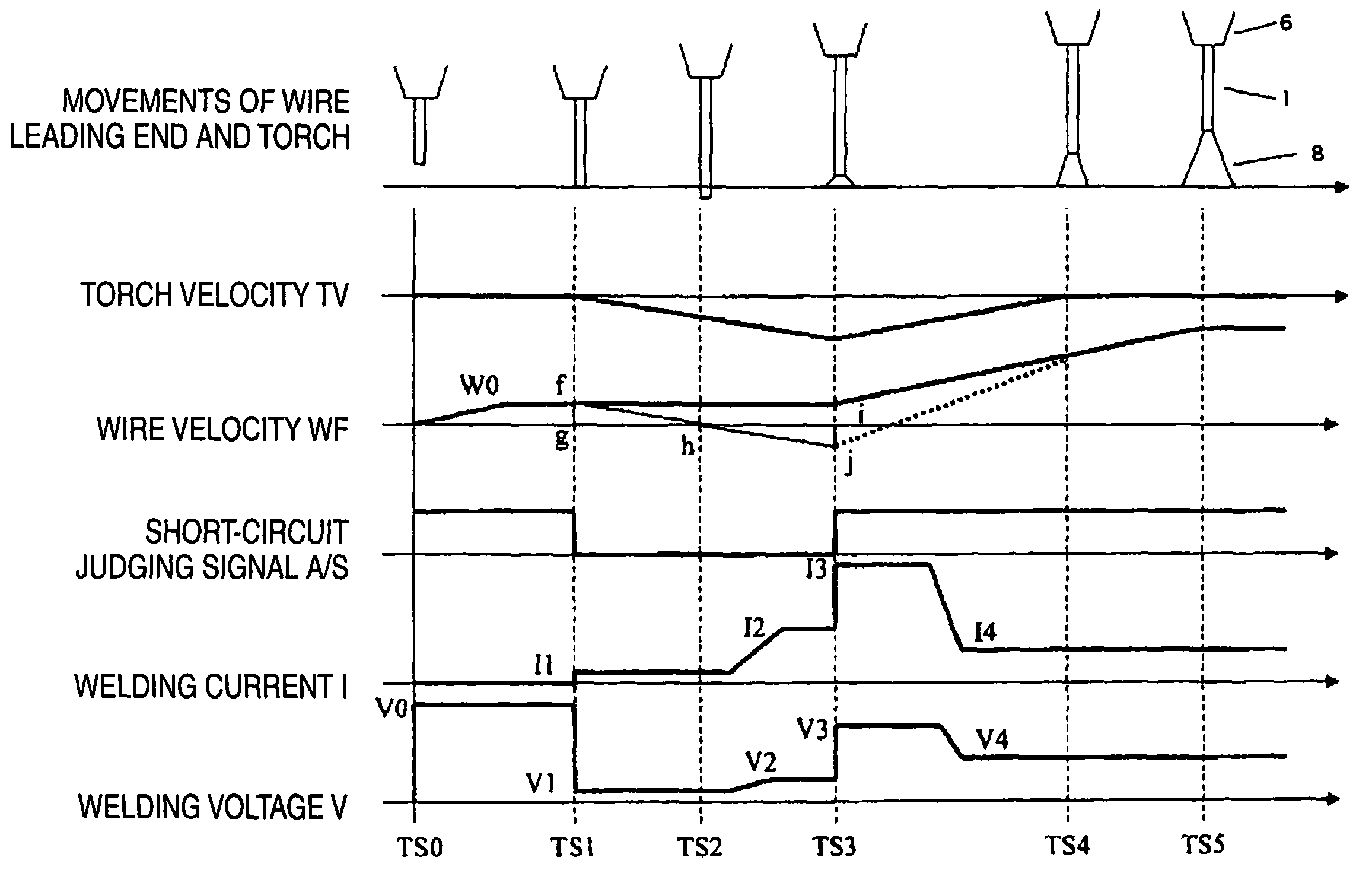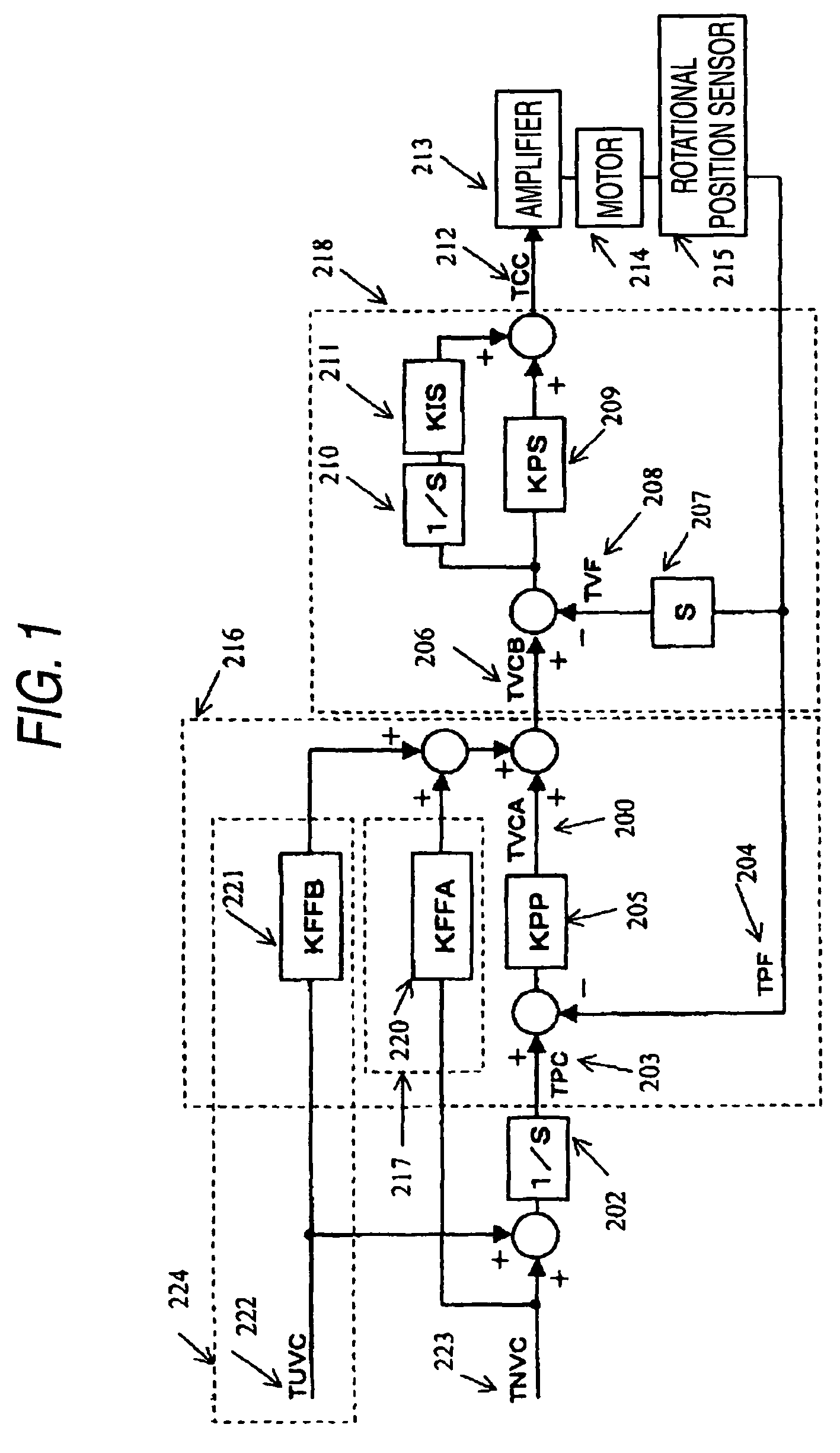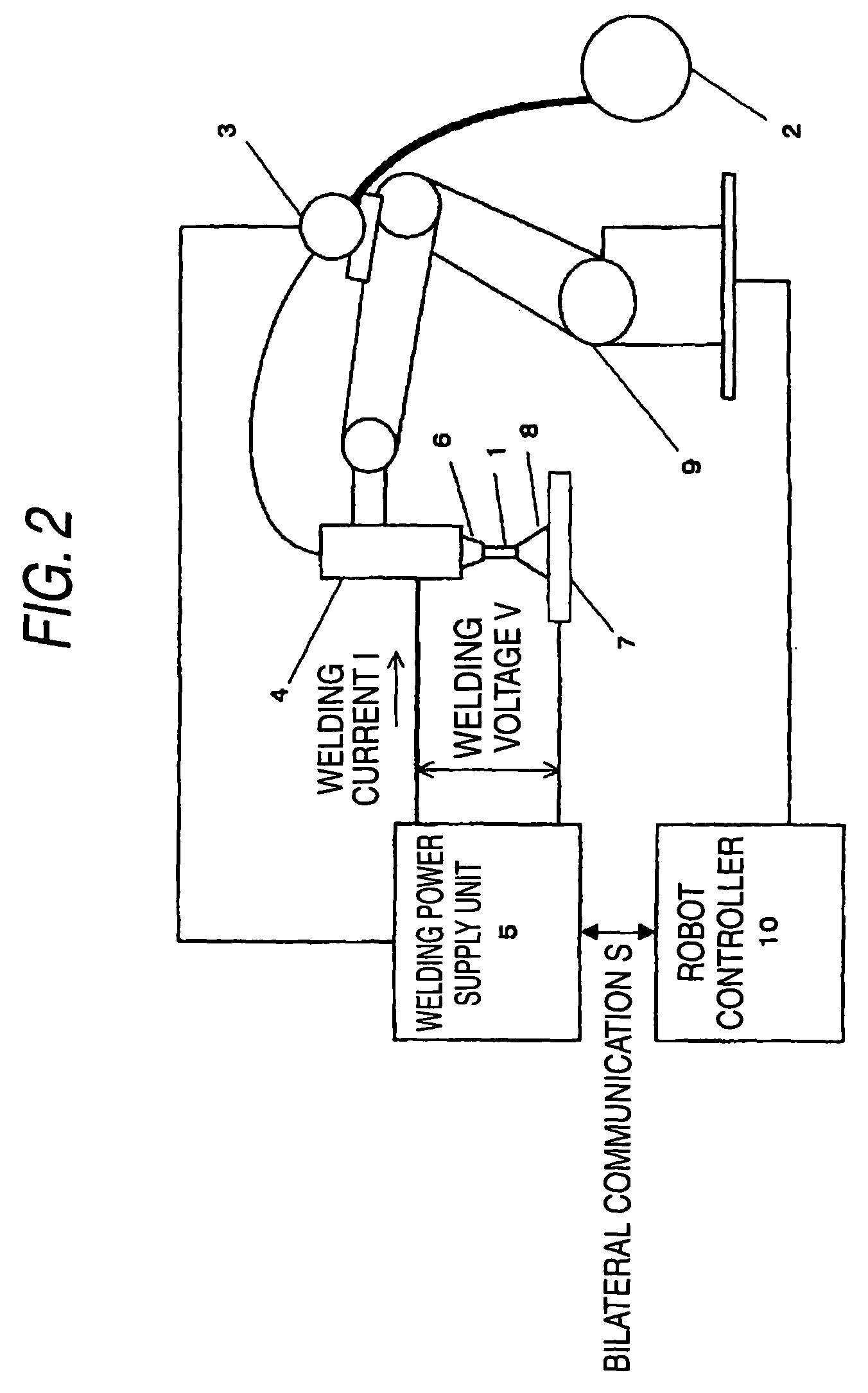Welding system and consumable electrode welding method
a welding system and electrode technology, applied in the field of welding system and consumable electrode welding method, can solve the problems of buckled welding wire b>101/b>, reduce useless time, increase the speed of follow-up performance of the actuator which moves the welding torch, and prevent overshooting.
- Summary
- Abstract
- Description
- Claims
- Application Information
AI Technical Summary
Benefits of technology
Problems solved by technology
Method used
Image
Examples
embodiment 1
[0137]One embodiment of the invention will be described below with reference to FIGS. 1 to 3 and FIGS. 7 and 8.
[0138]Referring first to FIGS. 2 and 3, construction of a welding system in this embodiment and a process of arc start will be described. Referring next to FIGS. 1, 7 and 8, a position control loop of a robot controller 10 in the embodiment will be described.
[0139]FIG. 2 is a constitutional diagram showing an outline of a welding system in the embodiment. A welding wire 1 that is a consumable electrode is supplied from a wire spool 2 in a direction of a welding torch 4 by a wire feeding motor 3.
[0140]A welding power supply unit 5 applies the predetermined welding current I and welding voltage V between the welding wire 1 and a base material 7 that is a workpiece through the welding torch 4 and a welding tip 6 thereby to generate an arc 8, and controls the wire feeding motor 3 to perform welding.
[0141]A robot manipulator 9, holding the welding torch 4, locates it in a weld s...
PUM
| Property | Measurement | Unit |
|---|---|---|
| Rg | aaaaa | aaaaa |
| frequency | aaaaa | aaaaa |
| velocity | aaaaa | aaaaa |
Abstract
Description
Claims
Application Information
 Login to View More
Login to View More - R&D
- Intellectual Property
- Life Sciences
- Materials
- Tech Scout
- Unparalleled Data Quality
- Higher Quality Content
- 60% Fewer Hallucinations
Browse by: Latest US Patents, China's latest patents, Technical Efficacy Thesaurus, Application Domain, Technology Topic, Popular Technical Reports.
© 2025 PatSnap. All rights reserved.Legal|Privacy policy|Modern Slavery Act Transparency Statement|Sitemap|About US| Contact US: help@patsnap.com



